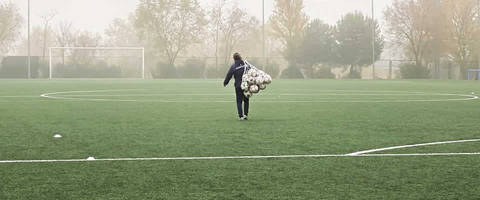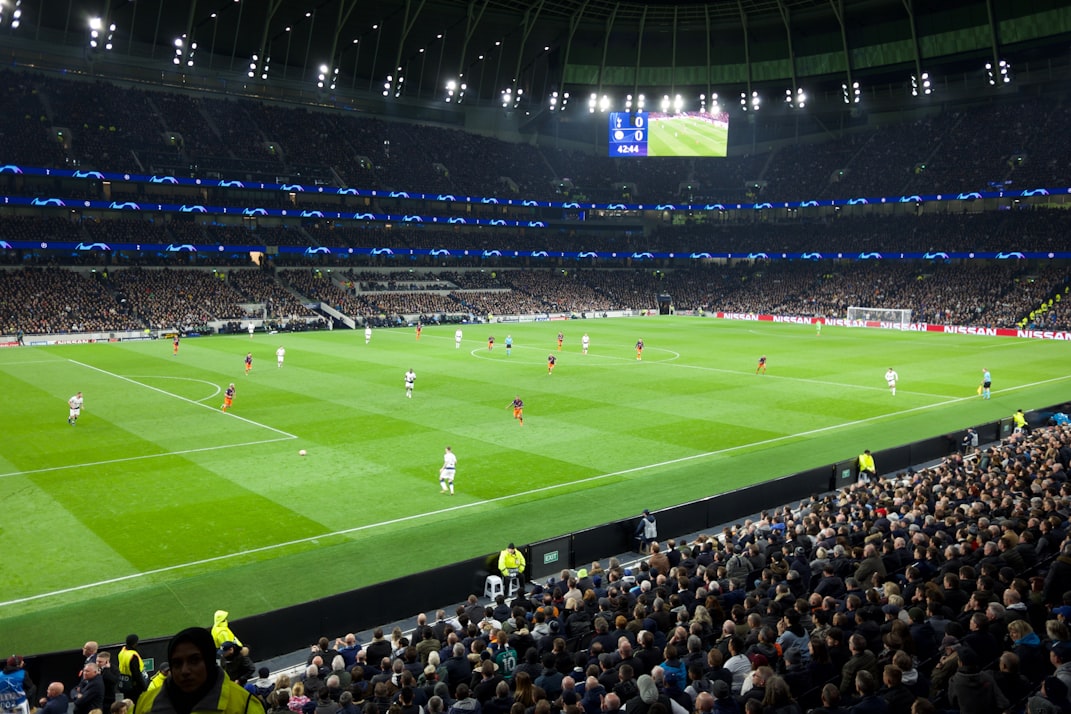Football's journey from humble community games to global spectacles is not just a tale of passion; it also revolves around remarkable numbers. Approximately 270 million individuals actively engage in football worldwide, including players, referees, and coaches – that equals about 4% of the world's population.
Football's roots can be traced back to ancient civilizations and their simple ball games, while its local essence flourished during medieval Europe's community matches. In the 19th century, England played a pivotal role as the game transitioned into professionalism through standardized rules and the formation of clubs.
But even amidst this evolution, grassroots football remained steadfast as the nurturing foundation for raw talent. As football continues to thrive on a grand scale today, its genuine spirit remains deeply intertwined with communities and local pitches where it all began. Here’s how grassroots football and professional football remain the same, and differ:

Analyzing the Game
Professional football teams usually have training sessions 4 to 5 times a week, while most semi-pro teams train just twice a week. Naturally, one would deduce that with more training, professional players might be in better shape, allowing them to cover more ground quickly. However, other factors, such as pitch quality, weather conditions, or if a key player had a draining work shift the previous night, can influence the comparison's validity.
Although there are some differences, they’re much less significant than you might have first thought. For example, in terms of in-season match distances, semi-pro players covered about 680 metres less, marking a 7% difference from professional players. While this difference might seem noteworthy, statistically, it isn't significant. This implies we can't conclusively state that professional players significantly outpace semi-professionals in terms of distance covered.
Delving deeper, it's fascinating to note that the discrepancy would've been smaller if not for one particular position: full-backs in professional teams covered 14% (or 1341 metres) more than their semi-pro counterparts.
Money Matters: The Diverse Financial Realms of Football
When we delve into the economic fabric of football, a fascinating dichotomy emerges, separating the grassroots from the professional game. According to a Deloitte report, the European 'big five' leagues generated over €15 billion in revenue during the 2019/2020 season, a stark contrast to the financial realities at grassroots levels.
In the limelight of professional football, the game is as much a business as it is a sport. Lucrative sponsorships inked with global brands run into millions, if not billions, providing clubs with substantial financial muscle.
Another significant distinction between grassroots and professional football is the world of betting. Professional football fans across the globe delve deep into betting strategies, odds, and game analyses. In the professional realm, the betting market stands out for its remarkable scale and sophistication. Bookmakers, like those in an updated list for September, use advanced algorithms, extensive research, and a wealth of data to calculate odds, providing bettors with a thorough and comprehensive betting experience. Major league matches attract significant attention, offering abundant information such as player statistics and historical outcomes.
In contrast, odds on non-league fixtures are much harder to come by, if at all. Unlike major leagues, non-league games receive less visibility and have limited available data. This lack of comprehensive information poses challenges for betting companies to establish odds, resulting in a relatively sparse betting landscape for semi-professional and grassroots matches.
Infrastructure and Facilities
Football’s expansive appeal is not just reflected in the players and fans, but also in the venues where the game is played. According to a UEFA report, Europe alone boasts over 230,000 football pitches, ranging from humble community fields to state-of-the-art stadiums.
At the grassroots level, the charm lies in simplicity. A local park, a yard, or even a vacant lot becomes a haven for aspiring footballers, with makeshift goals and the shared spirit of the community.
Contrast this with the professional realm, where stadiums, often seating upwards of 70,000 spectators, become hallowed grounds equipped with advanced technologies, plush facilities, and architectural prowess. These professional arenas, beyond hosting matches, serve as landmarks and symbols of civic pride. Yet, whether it's a grassless patch in a neighborhood or a technologically advanced arena, each serves the same purpose: celebrating and perpetuating the love for football.
Cultivating Champions through Training and Development
The journey of a footballer, from a young dreamer to a global superstar, is a testament to their training and development. According to a study conducted by the CIES Football Observatory, over 60% of professional footballers begin their careers in grassroots academies before reaching elite clubs.
At the grassroots level, training revolves around raw passion and natural talent. Local coaches, many of whom volunteer their time, focus on instilling fundamental skills and fostering a love for the game in young players. While these academies may lack the glamour of professional setups, they compensate with a close-knit community atmosphere and an emphasis on holistic growth.
On the flip side, professional training centers are hubs of state-of-the-art facilities, advanced coaching methodologies, and sports science innovations. Catering to both emerging talents and established stars, they offer specialized programs, nutrition plans, and recovery protocols tailored to optimize performance.
In football, scouting is a separate world of its own. Grassroots scouting involves searching for hidden gems, raw talents that have the potential to make it big on larger platforms. Scouts attend local matches, school tournaments, and community leagues in search of the next rising star.
On the other hand, professional scouting requires substantial investment and utilizes data analytics, performance metrics, and extensive networks to identify and secure established stars or promising young talents with demonstrated potential.
However, in essence, whether at the local park or on the grand stage, nurturing footballers to achieve their full potential remains the ultimate objective. So we could even say the two are not that different in this regard.
The Heartbeat of Football: Community, Culture, and Beyond
At the grassroots level, the community is the backbone. Local clubs often serve as more than just sporting entities; they are communal gathering points, fostering bonds, and creating shared memories. These clubs engrain values, build character, and offer an escape from daily life's rigors. The pitch becomes an extension of the neighborhood, and every goal scored resonates with shared pride and joy.
In its entirety, football's impact and legacy stretch beyond the 90-minute matches. The sport shapes identities, molds cultures, and leaves indelible marks on societies, proving that whether played in community parks or grand arenas, football remains a universal language of emotion, ambition, and unity.
Grassroots and professional football are perhaps not all that different after all.

















